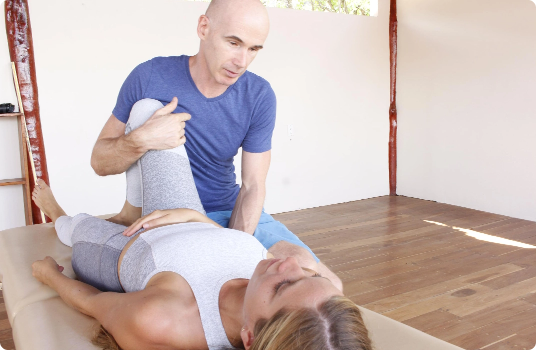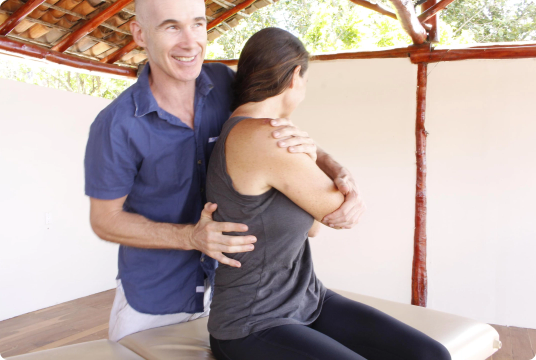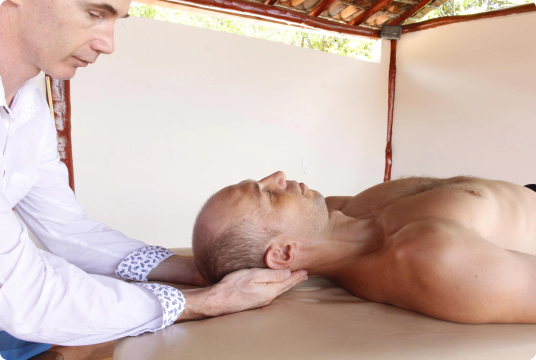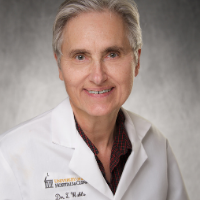
Ed approaches each client as an individual. That means no two clients will have the same treatment. He selects the most effective therapy for that person. However nearly all his treatment adhere to the following formula:
A detailed ‘case history’ where Ed will ask you about your current problem but also other factors in your life that could predispose or contribute to it. The case history will inquire into your previous injuries, your physiology (heart, digestive system etc) but also ask about your sleep, nutrition and stress load in life.
Once Ed has an idea of your situation he me ask you to do an active movement screen to see how you move and how your current problems is affecting that. Afterwards he will compare what he saw to what he feels in a passive exam of your joints and muscles.
The treatment will be hands-on, gentle and respectful.


There is no one technique specific to his therapy, but his practice demands the body be addressed as a whole unit – body, mind and spirit. Through his training as an osteopath, he looks at the body’s interrelated parts and the dynamic relationship between them. On top of that Ed acknowledges that the interrelated nature of the body also applies to the interrelated nature of the person. This means he will also consider factors outside just your physical complaints when forming a treatment for you. For example, stress from work or home affect your body’s ability to heal. Therefore, the key to recovering from long-term pain may require both a course of treatment and lifestyle changes.

Ed trained as an osteopath at the British School of Osteopathy in the UK and has an undergrad in Sport and Exercise Science from Exeter University, also in the UK. The word “osteopathy” comes from two Greek words meaning bone and dysfunction. The founder of osteopathy, Dr. Andrew Taylor Still, chose this name to highlight how the structure of the skeleton is vital to the proper function of the body’s systems. Misalignment of bones can cause dysfunction. Therefore manual osteopathic therapists assess, diagnose and treat disorders of the body’s structure as it relates to any of the body’s systems: muscular, skeletal, respiratory, cardiovascular, digestive, nervous or reproductive. In fact, osteopathic therapists work not only with the spine and joints, but with tissues, scars, fascia and fluids as well. We use manipulations to joints or organs and gentle movements to correct biomechanical dysfunctions. By restoring proper mechanics to an area, we allow the normal flow of fluids and improve function. By easing restrictions in this way, your body has the chance to mend and you can be healthy and comfortable once again.


Ed connects with each patient as a unique individual. There is no routine approach. He views the body as greater than a collection of its parts. As an osteopath he therefore understands that if one area of your body is not functioning normally, it can cause symptoms to appear elsewhere in your body. He always looks for the hidden factors that underlie any illness or injury. Osteopathic therapists acknowledge the body’s inherent ability to heal itself. Our goal is to restore this self-correcting potential by removing the obstacles that impede healing.
Osteopathic therapists have been trained to have “listening hands”. We have developed such an acute and accurate sense of touch that an untrained person would be surprised at how much we can understand about a patient just through our hands. Developing this extraordinarily detailed sense of touch requires many years of training and experience, and all the therapists in our clinic have both. We combine our intellectual knowledge of anatomy in motion with what we feel in our hands to understand the story being told by your tissues. We then use gentle manipulation to free restricted joints, tight muscles, tethered nerves and blockages around organs. The release of tension allows healing to occur.
In many ways, osteopathic therapy might seem like good, old-fashioned hands-on healing. But the healing does not involve any special “force.” There is a misunderstanding in popular culture about healing. Many people think that healing is something that is done to you. It is not. Healing is something that is facilitated. Your body is hard-wired to return to health. If you scratch your arm, you expect your body to stop the bleeding, develop a scab and eventually heal. Given the proper conditions, the same is true for almost any injury or illness. Osteopathic therapists help to generate those conditions, as though we were removing the pin that scratched your arm. With our intelligent hands and deep understanding of the body, osteopathic therapists help to remove obstacles and unravel places of tension so that your health returns. In recent years Ed has taken this further and studies how our thoughts can create illness and stop people from recovering. To this end he is currently undertaking a 3 year training with New York based Osteopathic Physician Dr. Steven Weiss. Dr. Weiss is a pioneer in connecting the dots between physical manifestation of pain and what can be influencing it from a metaphysical level. Ed was inspired to continue with this path of training after spending time learning from Native American, Central American and Filipino traditional medicine practitioners.


I enjoy using the exercises from the Scoliosis Correction Protocol as part of my spinal health program.


Thank you for your Scoliosis Correction Protocol. I was worried about having surgery because the doctor said that is most likely what will happen. When we saw the reduction we decided not to. I'm now 14 and there has been no increase in my curve
